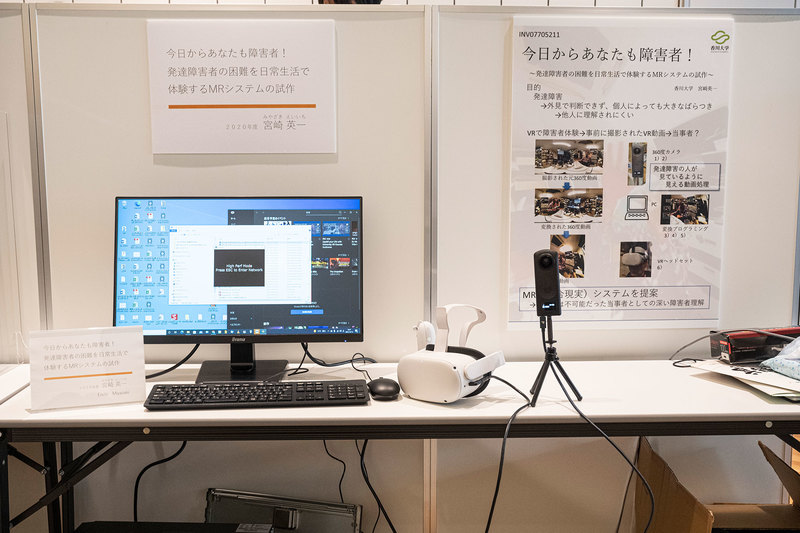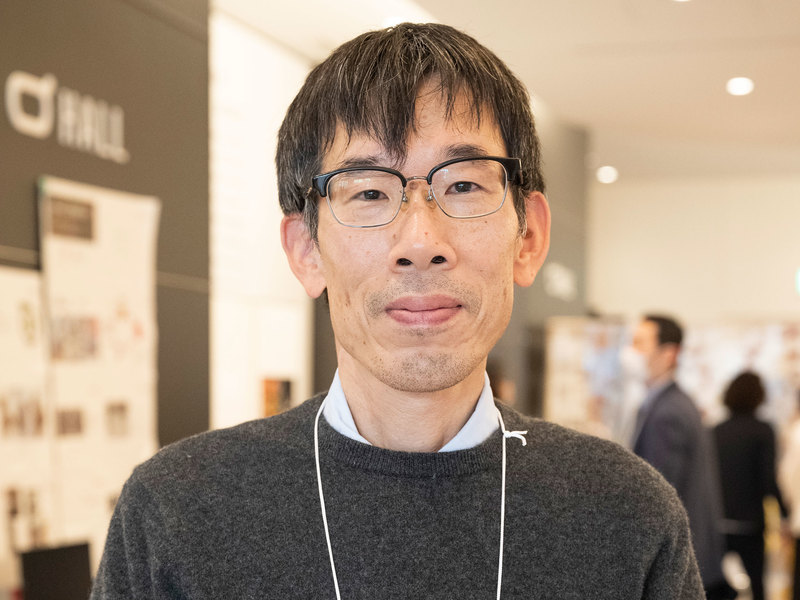Interviews

Experiencing Disabilities Through a Developmental Disorder Mixed Reality System (Part 1)
Eiichi Miyazaki
A first-person insight into the difficulties many people face around the world
Interviewer & Japanese Writer: Yamamoto Takaya; Translation & Editing: Matthew Cherry
The 2020 INNO-vation Program saw its fair share of unique challengers with extraordinary ideas. Eiichi Miyazaki was one of those visionaries, bringing his prototype of a mixed reality (MR) system to life. Through this technology, one can experience the difficulties people with developmental disorders live with every day.
Though there are many types of developmental disorders, a significant number of them involve some sort of visual impairment. Miyazaki’s technology allows users to experience what these cases may be like through the use of a 360-degree camera-equipped virtual reality headset. The camera takes 360-degree pictures which are then processed in real-time to present a similar view as those with visual impairments.

A computer processes images taken by a 360-degree camera and feeds them back into a virtual reality headset, giving users a similar experience as those with visual impairments.
Miyazaki was originally involved in engineering, specializing in technology education in the Faculty of Education at Kagawa University. He was introduced to the world of education for children with disabilities through a coworker at the same university. Professor Satoshi Sakai, specializing in instructional communication for disabled children, worked with Miyazaki to create an application that supported kids with their studies.
“I was speaking with Professor Sakai one day, and he asked if I’d like to help make a system using ICT that let people see the world the same way that people with disabilities do, so from there I became involved in its development,” Miyazaki recalled about the beginnings of his research.
Visual impairments have often been cited as one of the symptoms of developmental disorders. These impairments can include double vision, palinopsia (afterimages), and strong levels of contrast in perceived images.
There have been devices in the past that simulate these impairments through virtual reality experiences, but they rely heavily on pre-recorded images that have been processed beforehand.
“It’s like you’re watching a movie,” Miyazaki explained. “You can still get a feel for how people with developmental disorders see the world, but it still leaves you with a lingering feeling that you didn’t truly experience it yourself. Using an MR system that combines the real and virtual worlds, I devised a method to let users see what people with developmental disorders experience in real-time. Utilizing the immediate surrounding space instead of pre-recorded imagery lets users have a more profound experience.”
Miyazaki had submitted his idea to the INNO-vation Program in the past, but it wasn’t selected. After revising his idea, he tried one more time and was accepted as a challenger to the 2020 INNO-vation Program’s Disruptive Challenge.
In part 2, we’ll take a look at his time during the INNO-vation Program.


